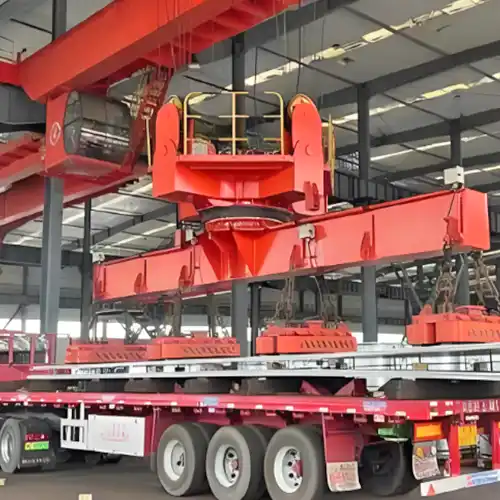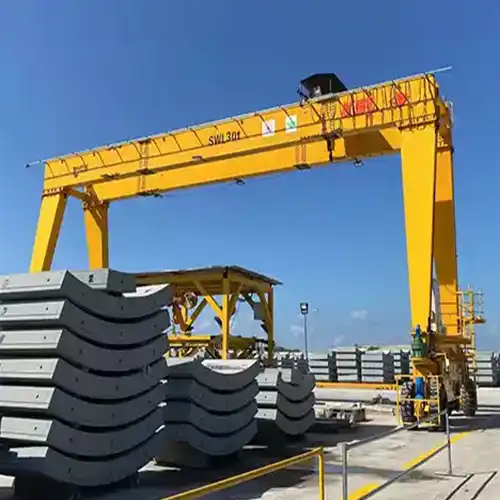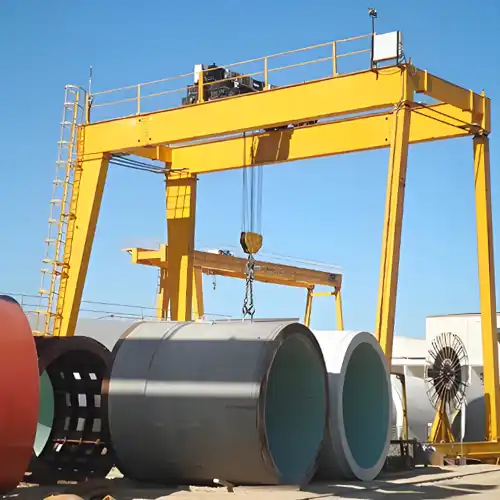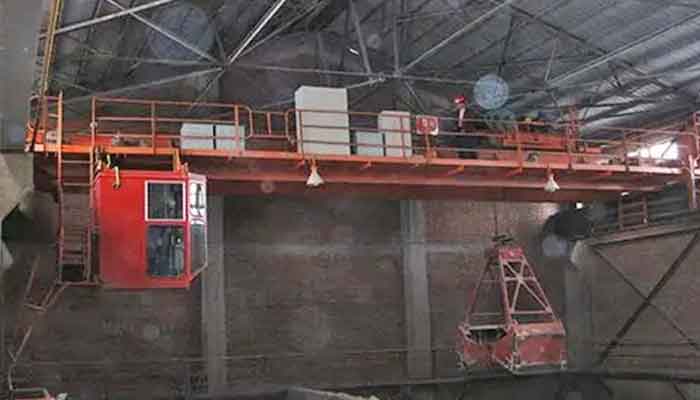
Overhead Cranes & Gantry Crane for Cement Manufacturing 5 Ton, 10 Ton
Overhead Cranes & Gantry Crane in Cement Manufacturing and Beyond
In the field of cement manufacturing, the significance of efficient material handling cannot be overstated. At the heart of this crucial process lies a range of powerful machines known as cranes, essential for optimizing operations, ensuring safety, and enhancing productivity within cement plants.
Importance of Efficient Material Handling in Cement Production
Material handling forms the backbone of cement production. The raw materials required for cement - limestone, clay, silica, iron ore, and more - demand careful and precise handling from arrival to processing. These materials undergo a series of steps, from crushing and grinding to blending, heating, and ultimately forming the final product - cement.
The efficiency of these operations heavily relies on the seamless flow of materials within the plant. Any bottleneck in material movement can lead to production delays, increased energy consumption, and compromised product quality. Therefore, the importance of efficient material handling cannot be underestimated, making cranes indispensable assets in the cement manufacturing process.
Overview of Crane Types and Their Role in Optimizing Operations
Cranes are the mechanical workhorses that facilitate the movement, lifting, and placement of heavy materials and equipment in cement plants. They come in various forms, each designed for specific tasks and operational requirements. Here's a brief overview of the primary crane types used in cement manufacturing:
In the intricate ecosystem of cement manufacturing, overhead cranes stand tall as indispensable assets, serving multifaceted roles and addressing diverse operational needs within the plant. Let's delve deeper into the various types of overhead cranes and their specialized capacities crucial for efficient cement production:
Bridge Cranes: Heavy-Duty Lifting for Various Plant Sections
Bridge cranes, often referred to as Overhead Cranes, serve as the workhorses of cement plants. These robust machines traverse the length and breadth of the plant, executing heavy-duty lifting operations. Equipped with hoists and trolleys, they efficiently transport raw materials, equipment, and finished products across different sections, optimizing material flow and minimizing production delays. Based on different requirements in different procetures, the overhead crane can be designed into single girder crane, double girder crane and explosion proof design.
Bridge Cranes: These heavy-duty cranes are pivotal for lifting and transporting materials across different sections of the plant. They play a critical role in the movement of raw materials and finished products.
Gantry Cranes: Bulk Material Handling and Outdoor Operations
Gantry cranes are the stalwarts of bulk material handling in cement plants, excelling in outdoor operations. Their towering structures and impressive lifting capacities make them ideal for handling large quantities of raw materials such as limestone, clay, and aggregates. These cranes ensure swift and efficient material transfer, contributing significantly to the uninterrupted flow of production processes.
Gantry Cranes: Well-suited for bulk material handling, gantry cranes operate outdoors, providing the ability to handle hefty loads efficiently. They contribute significantly to outdoor operations within cement plants.
Jib Cranes: Precise Maintenance and Equipment Handling
Precision is the hallmark of jib cranes, dedicated to performing precise maintenance tasks and handling equipment within confined spaces of the cement plant. Wall-mounted or free-standing, these cranes offer flexibility in maneuverability and positioning, playing a pivotal role in ensuring smooth maintenance operations and equipment handling.
Jib Cranes: Precision is the hallmark of jib cranes, primarily utilized for maintenance and handling equipment within confined spaces. They offer versatility in maneuvering and positioning.
Grab Bucket Cranes: Efficient Raw Material Transport and Discharge
Grab bucket cranes specialize in the rapid transport and discharge of raw materials within cement plants. Equipped with grabber mechanisms, these cranes swiftly load, transport, and discharge bulk materials such as limestone, clay, and additives. Their efficiency significantly contributes to streamlined material handling processes, optimizing production throughput.
Grab Bucket Cranes: Optimized for the swift transport and discharge of raw materials, grab bucket cranes efficiently handle bulk material operations in cement plants, enhancing overall production efficiency.
Each type of overhead crane in a cement manufacturing facility serves a specific purpose, addressing unique operational requirements and ensuring the seamless flow of materials critical to the production cycle.
In the forthcoming sections, we will explore the extensive applications, features, benefits, and tailored functionalities of these overhead cranes, unveiling their pivotal role in optimizing cement manufacturing operations.
Your Trusted Overhead Crane Manufacturer & Supplier
0.5 Ton- 2Ton Light & Simple Gantry Crane
Your Handy,Small & Most Economical Gantry
Applications of Overhead Cranes in Cement Manufacturing
Overhead cranes play a pivotal role in the multifaceted operations of cement manufacturing plants, contributing significantly to various crucial aspects. Here, we explore the diverse applications of these cranes within the context of cement production:
In the cement manufacturing industry, various procedures require different types of overhead cranes to facilitate specific tasks and processes. Here's a breakdown of typical overhead cranes used in different procedures within a cement manufacturing plant:
Raw Material Handling: Addressing Material Quality and Quantity
Raw material handling stands as a fundamental stage in cement production. Overhead cranes, with their precision and lifting capabilities, ensure the efficient movement of raw materials like limestone, clay, iron ore, and other additives. They play a critical role in maintaining material quality by minimizing contamination and ensuring precise quantities for consistent batch formulations.
Crane Applications for Cement Manufacturing
- Unloading Area: Overhead cranes are used to unload raw materials like limestone, clay, shale, and iron ore from trucks or railcars.
- Stockyard Management: Gantry cranes move materials to designated storage areas or feed conveyors for further processing.
Types of Cranes for Raw Material Handling:
- Double Girder Bridge Cranes: Used for unloading raw materials from trucks, transporting materials to storage areas, and feeding them into crushers or conveyors.
- Gantry Cranes: Utilized in outdoor areas or storage yards for handling bulk materials like limestone, clay, and gypsum.
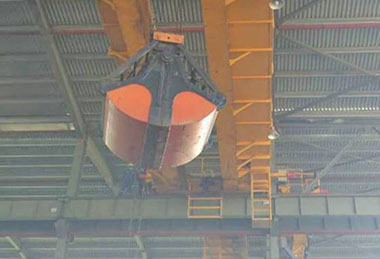
Raw Material Handling:
- Type of Crane: Double Girder Bridge Crane.
- Features: Robust construction, high load-bearing capacity, long span capability, and precise control for heavy material handling.
- Benefits: Efficient handling of heavy raw materials like limestone, clay, shale, and iron ore.
- Functions: Unloading trucks/railcars, transporting materials to storage areas, and feeding materials into crushers or conveyors.
Crushing and Grinding:
Crane Applications for Cement Manufacturing
- Crusher Operations: Overhead cranes assist in moving heavy crusher components for maintenance or replacement.
- Mill Area: They handle grinding media, mill liners, and other equipment parts during maintenance or repair.
Types of Cranes for Crushing and Grinding:
- Single Girder Bridge Cranes: Employed for moving and positioning equipment like crushers, mills, and screens.
- Jib Cranes: Assist in maintenance tasks for accessing and servicing machinery.
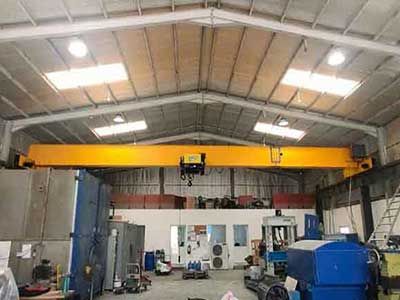
Crushing and Grinding:
Type of Crane: Single Girder Bridge Crane.
- Features: Versatility, precise positioning, and maneuverability for handling equipment parts during maintenance.
- Benefits: Assists in moving and positioning heavy crusher components, mill liners, and grinding media.
- Functions: Supporting maintenance or replacement tasks for crushers and grinding mills.
Blending and Mixing:
- Crane Applications for Cement Manufacturing -Blending Systems: Bridge cranes transport raw materials to blending systems for homogenization and mixing.
- Types of Cranes for Cement Blending and Mixing: Bridge Cranes (Single or Double Girder): Transport materials to blending systems and mixers for creating the cement mixture.
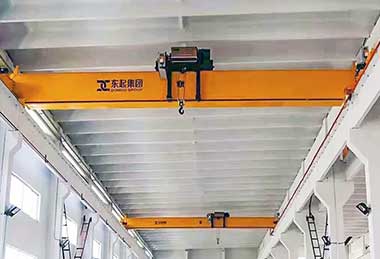
Blending and Mixing:
- Type of Crane: Bridge Crane (Single or Double Girder).
- Features: Reliability, precise control, and flexibility in material handling.
- Benefits: Efficient transportation of raw materials to blending systems for homogenization and mixing.
- Functions: Transporting materials to blending systems to create the cement mixture.
Preheating and Pre-calcining:
Crane Applications for Cement Manufacturing
- Preheater Towers: Cranes support maintenance tasks by facilitating access for inspections, repairs, or replacing components.
- Pre-calciner Area: Used for handling refractory materials or assisting in maintenance activities.
Types of Cranes for Preheating and Pre-calcining:
- Double Girder Bridge Cranes: Used for maintenance, positioning of refractory materials, and handling equipment in the preheating and pre-calcining zones.
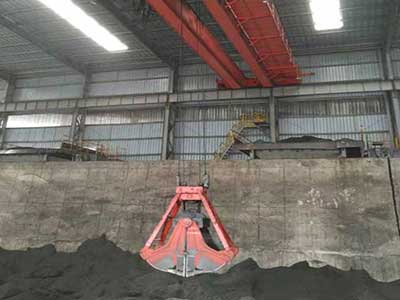
Preheating and Pre-calcining:
Type of Crane: Double Girder Bridge Crane.
- Features: Durability, high temperature resistance, and stability for handling refractory materials and supporting maintenance tasks in high-temperature areas.
- Benefits: Facilitates maintenance, inspections, and replacement of components in preheater towers or pre-calciner zones.
- Functions: Assists in maintenance activities and material handling in high-temperature environments.
Rotary Kiln Operations:
Crane Applications for Cement Manufacturing
- Kiln Maintenance: Overhead cranes are crucial for lifting and positioning large components within the kiln during maintenance or repairs.
- Cooling Zone: Gantry cranes handle cooled clinker for storage or further processing.
Types of Cranes for Rotary Kiln Operations:
- Double Girder Bridge Cranes: Essential for lifting and replacing kiln components, handling materials during the burning process, and maintaining the kiln.
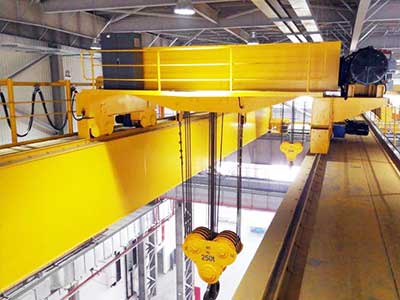
Rotary Kiln Operations:
Type of Crane: Double Girder Bridge Crane.
- Features: Heavy-duty design, high lifting capacity, and stability for handling large kiln components.
- Benefits: Essential for lifting and positioning components during kiln maintenance or repairs.
- Functions: Supports maintenance and handling tasks within the rotary kiln area.
Clinker Storage and Handling:
Crane Applications for Cement Manufacturing -Clinker Silos: Cranes transport clinker from kilns to storage silos or move it to subsequent processing units.
Types of Cranes for Clinker Cooling and Storage- Gantry Cranes: Transport clinker to cooling systems and storage areas.
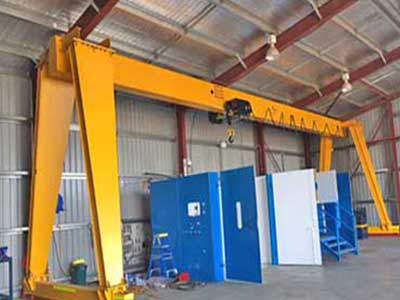
Clinker Storage and Handling:
Type of Crane: Gantry Crane.
- Features: Mobility, outdoor suitability, and flexibility for material movement in storage areas.
- Benefits: Efficiently handles cooled clinker for storage or further processing.
- Functions: Transports clinker from kilns to storage silos or processing units.
Packaging and Shipping:
Crane Applications for Cement Manufacturing
- Packaging Lines: Jib cranes assist in handling bags, pallets, and packaging materials for cement products.
- Loading Area: Overhead cranes load finished cement products onto trucks or railcars for transportation.
Types of Cranes for Packing and Shipping:
- Single Girder Bridge Cranes: Aid in loading finished cement products onto trucks or rail cars for transportation.
- Jib Cranes: Used for handling packaging materials and assisting in packaging processes.
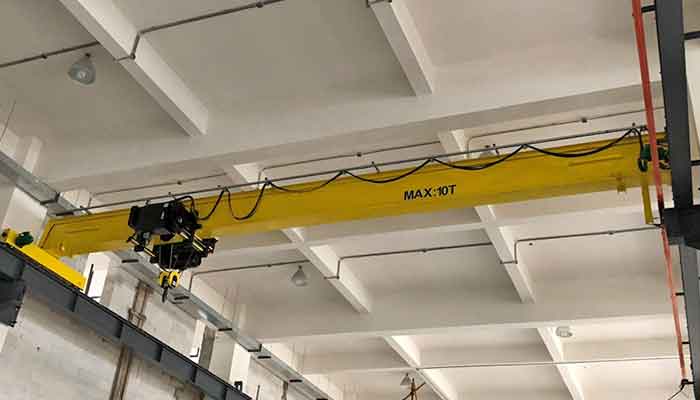
Packaging and Shipping:
Type of Crane: Single Girder Bridge Crane / Jib Crane.
- Features: Precision, maneuverability, and adaptability for handling packaging materials and finished products.
- Benefits: Assists in loading finished cement products onto trucks or railcars.
- Functions: Handling bags, pallets, and packaging materials during the packaging and shipping processes.
Maintenance and Repairs: Minimizing Downtime and Ensuring Safety
The maintenance and repair of machinery and equipment within cement plants are essential to sustain smooth operations. Overhead cranes, especially jib cranes, provide the precision required for maintenance tasks, ensuring timely repairs without causing substantial production downtime. They enable quick and efficient handling of heavy components, contributing to the plant's overall safety and reliability.
Crane Applications for Cement Manufacturing
- Equipment Maintenance Workshops: Overhead cranes facilitate lifting heavy machinery parts or equipment for maintenance, repairs, or replacements.
- Facility-wide Support: Jib cranes positioned strategically across the plant aid in various maintenance tasks, especially in confined spaces or specific workstations.
- Logistics and Material Movement: Material Transfer Points: Cranes move materials between different stages of production, optimizing workflow and minimizing manual handling.
Types of Cranes for Maintenance and Repairs:
- Jib Cranes: Positioned strategically to provide maintenance support for various equipment and machinery within the plant.
- Bridge Cranes (Single or Double Girder): Utilized for heavy lifting during maintenance tasks.
Each procedure in the cement manufacturing process has unique requirements for material handling, equipment maintenance, and logistical operations. Therefore, a combination of different types of overhead cranes is used throughout the plant to ensure efficient and safe handling of materials, machinery, and finished products at various stages of production.
Each type of crane used in these specific applications offers unique features that align with the requirements of the tasks performed within the cement manufacturing process, ensuring efficiency, safety, and optimal performance in material handling, maintenance, and logistics.
Features, Benefits, and Functions of Overhead Cranes in Cement Manufacturing
Overhead cranes in the realm of cement manufacturing are not just lifting machines; they are sophisticated tools engineered to deliver precise functionalities and optimize operations. Here, we uncover the distinct features, benefits, and functions that make these cranes indispensable assets within cement plants:
Load-bearing Capabilities and Precision Control
The primary task of overhead cranes in cement plants revolves around their load-bearing capabilities and precision control. These cranes are designed to lift and transport heavy loads with remarkable accuracy and control, ensuring precise positioning of materials during various production stages. Their superior load-bearing capacities guarantee the safe and efficient handling of heavy components, contributing to streamlined material flow.
Durability, High-Temperature Resistance, and Longevity
Operating in the demanding environment of cement manufacturing, overhead cranes require exceptional durability and resistance to high temperatures. These cranes are constructed with materials and coatings resistant to corrosion, heat, and abrasive substances present in cement plants. This durability ensures a prolonged service life, minimizing maintenance needs and contributing to cost-effectiveness.
Adaptability, Versatility, and Meeting Operational Changes
The adaptability and versatility of overhead cranes in accommodating operational changes are critical. They can be modified and tailored to suit evolving production demands, allowing for seamless integration into diverse workflows within the plant. Whether it's a change in material handling requirements or process modifications, these cranes can swiftly adapt to the shifting needs of the cement manufacturing process.
Automation, IoT Integration, and Future-Proofing Investments
Embracing technological advancements, overhead cranes in modern cement plants are integrating automation and IoT solutions. This integration enhances operational efficiency, allowing for remote monitoring, predictive maintenance, and data-driven decision-making. By embracing these innovations, cement plants future-proof their investments, ensuring that their overhead crane systems remain at the forefront of technological advancements.
The intricate features, benefits, and functions embedded within overhead cranes in cement manufacturing highlight their pivotal role in optimizing operations, ensuring safety, and meeting the dynamic demands of the industry.
Specialized Overhead Cranes for Specific Applications
Cement manufacturing plants operate in diverse environments, subject to stringent safety regulations and specific operational requirements. To meet these unique demands, overhead cranes can be customized with tailored features catering to specialized applications within the cement industry:
Safety Features and Compliance: Buyer's Checklist for Crane Selection
Safety is paramount in any industrial setting, especially in cement manufacturing. Overhead cranes come equipped with a range of safety features, including overload protection, emergency braking systems, limit switches, and redundant mechanisms to ensure operational safety. Compliance with industry standards and safety regulations is a critical aspect considered during the selection of cranes for a cement plant.
Tailored Features for Specific Environments: Meeting Regulatory Standards
Cement manufacturing plants operate under diverse environmental conditions, often subject to extreme temperatures, humidity, and corrosive elements. Overhead cranes can be customized with specialized coatings, materials, and features to withstand these harsh environments while adhering to regulatory standards. For instance, gantry cranes designed for outdoor use are built with weatherproof materials to withstand varying weather conditions.
The versatility of overhead cranes in addressing diverse operational needs within a cement plant highlights their significance in maintaining efficient and safe manufacturing processes.
Explosion-Proof Overhead Cranes
Within cement plants, particularly in areas where flammable gases or dust are present, explosion-proof overhead cranes are imperative. These cranes are engineered with specialized enclosures, electrical components, and construction materials to prevent sparks or ignition sources, ensuring safety in potentially hazardous environments.
High-Temperature Resistant Cranes
Cement manufacturing involves extreme temperatures, especially in kilns and other high-heat areas. High-temperature resistant cranes are designed using heat-resistant materials, coatings, and insulations that can withstand these harsh conditions. These cranes maintain their structural integrity and functionality even in elevated temperatures, ensuring continuous operations without compromising safety.
Specialized Maintenance Cranes
Specific areas within cement plants require dedicated cranes for maintenance purposes. These cranes, equipped with features like precise maneuverability, lifting attachments, and adjustable configurations, cater to the intricate requirements of maintaining machinery, equipment, and facilities within confined spaces or elevated platforms.
Eco-Friendly and Sustainable Crane Solutions
Embracing sustainability initiatives, eco-friendly overhead cranes are designed to minimize environmental impact. These cranes incorporate energy-efficient components, regenerative braking systems, and materials with reduced carbon footprints. By adopting sustainable crane solutions, cement plants aim to reduce energy consumption and contribute to environmental preservation.
Tailoring overhead cranes to suit specific applications within cement manufacturing plants showcases the adaptability and customization capabilities of these essential equipment, ensuring safety, efficiency, and compliance with industry standards.
Your Trusted Overhead Crane Manufacturer & Supplier
Gantry Crane for Cement Manufacturing Factory
Gantry cranes play a pivotal role in bulk material handling and outdoor operations within the domain of cement manufacturing and related sectors. Let's delve deeper into the various aspects of gantry cranes and their specific applications:
Gantry cranes are indispensable in cement manufacturing, offering unparalleled capabilities for handling bulk materials and executing outdoor operations efficiently. Here are detailed insights into the types, capacities, and tailored features of gantry cranes tailored for cement manufacturing and related sectors:
Types of Gantry Cranes available for Cement Manufacturing & Related Sectors
Gantry cranes come in various configurations suitable for different applications within cement plants and related sectors. These may include rail-mounted gantry cranes (RMGs), rubber-tired gantry cranes (RTGs), and semi-gantry cranes. Each type caters to specific requirements, offering distinct advantages in material handling and outdoor operations.
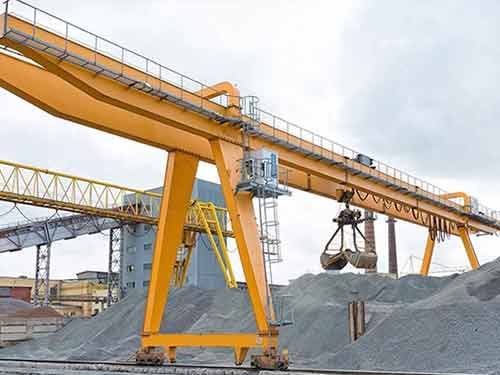
Rail-Mounted Gantry Cranes (RMGs)
Application: RMGs are a prevalent choice for material handling and storage in cement manufacturing plants and related sectors. They run on rails installed on the ground, allowing them to move laterally along the tracks while efficiently handling heavy loads.
- Precise Movement: RMGs are designed for accuracy and precision in material handling tasks, enabling them to transport loads across designated paths with high reliability.
- Heavy Load Capacity: These cranes excel in lifting substantial loads, making them suitable for handling bulk materials such as aggregates, clinker, and other raw materials essential in cement production.
- Space Utilization: RMGs are known for their capability to optimize space utilization within manufacturing facilities, allowing for efficient storage and retrieval of materials.
Rubber-Tired Gantry Cranes (RTGs)
Application: RTGs find extensive use in outdoor operations within cement plants and related sectors. Their rubber tires enable them to move freely and swiftly across paved surfaces, making them ideal for outdoor material handling tasks.
- Mobility: RTGs are highly mobile due to their rubber tires, facilitating easy movement across various terrains and surfaces, including paved areas.
- Flexibility: These cranes offer flexibility in terms of maneuverability and positioning, enabling efficient handling of materials in outdoor yards and storage areas.
- Quick Deployment: RTGs are known for their rapid deployment capabilities, allowing for swift handling of materials and efficient loading and unloading processes.
Application: Semi-gantry cranes are suitable for applications that require the advantages of both gantry and overhead bridge cranes. They are commonly used in scenarios where part of the facility requires overhead lifting, while the other part requires floor-level access.
- Versatility: Semi-gantry cranes offer a blend of the advantages of gantry and overhead bridge cranes, providing versatility in material handling tasks within specific areas of the facility.
- Cost-Efficiency: These cranes offer cost-effective solutions by combining the benefits of two crane types, optimizing operations without the need for extensive modifications to the facility's structure.
- Adaptability: Semi-gantry cranes can be customized to suit specific space constraints and operational requirements, enhancing adaptability within the manufacturing environment.
Each type of gantry crane offers distinct advantages tailored to specific requirements within cement manufacturing plants and related sectors. Selecting the appropriate type is crucial in optimizing material handling operations and ensuring efficient outdoor operations in these industries.
Variations in Capacity and Span: Addressing Load Diversity
Gantry cranes exhibit a wide range of load-bearing capacities and span lengths, addressing the diverse load requirements prevalent in cement manufacturing and allied sectors. Ranging from handling smaller loads to lifting hefty materials like aggregates, clinker, and bulk goods, gantry cranes are designed to meet varying operational demands.
Gantry cranes stand out for their remarkable versatility in handling diverse loads, catering to the wide-ranging operational needs within cement manufacturing and allied sectors. These cranes are engineered with varying load-bearing capacities and span lengths, enabling them to address the extensive diversity in material handling requirements prevalent in these industries:
- Load-Bearing Capacities: Gantry cranes are available in a spectrum of load-bearing capacities, ranging from relatively smaller capacities suitable for handling lightweight materials to robust configurations capable of lifting substantial loads encountered in cement manufacturing processes. These load capacities can vary significantly, starting from a few tons and extending to several hundred tons, ensuring the efficient handling of materials of varying weights.
- Span Lengths: The span length of gantry cranes is another crucial aspect that contributes to their versatility. Span lengths can be customized based on the specific operational requirements within cement plants and allied sectors. Shorter spans cater to confined spaces, enabling precise material handling in restricted areas, while longer spans facilitate the movement of materials across expansive sections of the facility.
- Diverse Load Requirements: Gantry cranes are designed to handle a diverse range of materials encountered in cement manufacturing and related industries. From the delicate handling of smaller loads, such as spare parts and tools, to the robust lifting of hefty materials like aggregates, clinker, and bulk goods essential in cement production, these cranes efficiently adapt to varying operational demands.
- Tailored Configurations: Depending on the specific load requirements and spatial constraints within a facility, gantry cranes can be tailored with specialized configurations. These configurations may include adjustable spans, different hoisting mechanisms, and customized lifting attachments, ensuring the precise handling of diverse materials while optimizing operational efficiency.
The adaptability of gantry cranes in accommodating a wide spectrum of load-bearing capacities and span lengths is pivotal in ensuring seamless material handling operations within cement manufacturing and allied sectors. Their ability to address varying load diversity contributes significantly to the efficiency and productivity of these industrial environments.
Outdoor Applications for Cement Manufacturing: Weatherproofing and Corrosion Resistance
Given their primary use in outdoor environments, gantry cranes are constructed using weatherproof materials such as galvanized steel or equipped with protective coatings. These specialized constructions protect the cranes from harsh weather conditions, ensuring durability and longevity despite exposure to elements like rain, sunlight, and fluctuating temperatures.
Gantry cranes play a crucial role in outdoor applications within cement manufacturing plants, where they encounter various environmental challenges. Understanding the significance of weatherproofing and corrosion resistance is vital in ensuring the durability and sustained functionality of gantry cranes operating in outdoor settings:
Specialized Construction Materials: Gantry cranes designed for outdoor use are constructed using weather-resistant materials such as galvanized steel or equipped with protective coatings. These specialized constructions shield the cranes from adverse weather conditions, including rain, snow, UV radiation, and temperature fluctuations prevalent in outdoor environments.
Weatherproof Design: The design of outdoor gantry cranes incorporates features aimed at mitigating the impact of harsh weather elements. This includes sealed electrical components, weather-resistant cables, and durable surface treatments to prevent corrosion and degradation due to prolonged exposure to moisture and climatic variations.
Corrosion Resistance: Protection against corrosion is a paramount consideration for gantry cranes in outdoor settings. Corrosion-resistant materials and coatings, such as zinc coatings, epoxy paints, or other specialized treatments, are applied to crane components vulnerable to corrosion, ensuring longevity and reliability even in corrosive environments.
Durability and Longevity: By implementing weatherproofing measures and corrosion-resistant designs, gantry cranes exhibit enhanced durability and extended service life. These measures minimize the impact of environmental factors, thereby reducing maintenance needs and operational downtime, ultimately contributing to cost-efficiency.
The utilization of gantry cranes equipped with weatherproofing features and corrosion-resistant materials significantly enhances their resilience and reliability in outdoor environments encountered in cement manufacturing and related sectors. These specialized constructions ensure sustained performance, enabling uninterrupted material handling operations despite exposure to challenging external conditions.
Portability and Installation: User Concerns for Easy Setup
Some gantry cranes are engineered for portability, enabling easy relocation within the plant premises or among different project sites. Their modular designs and simplified installation processes cater to user concerns for efficient setup, minimizing downtime and enhancing operational flexibility.
Gantry cranes, with their diverse types and tailored features, prove to be invaluable assets in cement manufacturing and related sectors, ensuring seamless bulk material handling and facilitating outdoor operations with efficiency and reliability.
Portability and Installation: User Concerns for Easy Setup
In the field of cement manufacturing and related sectors, some gantry cranes are purposefully engineered for portability, offering a host of advantages in terms of flexibility, ease of relocation, and streamlined installation processes. Understanding the significance of these features is crucial in optimizing operations and minimizing downtime:
- Modular Designs: Portable gantry cranes feature modular designs, allowing them to be disassembled into smaller components for ease of transportation and relocation. These modular components facilitate efficient handling and transportation, especially when moving between different areas within the plant or across various project sites.
- Ease of Installation: The simplified installation process of portable gantry cranes is a significant user benefit. These cranes are designed to be assembled and set up swiftly without requiring complex tools or extensive technical expertise. Such streamlined installation procedures minimize downtime and contribute to operational efficiency.
- Operational Flexibility: Portability offers operational flexibility, allowing gantry cranes to adapt swiftly to changing operational needs. Whether it involves shifting production lines, reconfiguring workspaces, or addressing temporary project requirements, portable gantry cranes facilitate quick and convenient adjustments without disrupting workflow continuity.
- Minimized Downtime: The efficient setup of portable gantry cranes leads to reduced downtime during installation or relocation. This aspect is critical in cement manufacturing and related sectors, where uninterrupted material handling and operational continuity are paramount for meeting production targets.
- Cost-Effectiveness: The portability and simplified installation processes of these gantry cranes contribute to cost-effectiveness. They eliminate the need for specialized transportation or extensive setup time, ultimately optimizing resource allocation and operational expenditures.
Portable gantry cranes, with their user-friendly design, ease of installation, and mobility features, offer a practical solution for addressing the challenges of seamless material handling and facilitating outdoor operations with enhanced efficiency and reliability in cement manufacturing and related sectors.
Your Trusted Overhead Crane Manufacturer & Supplier
Jib Cranes Operation in Cement Factory
Jib cranes serve as essential tools for precise maintenance and equipment handling within cement manufacturing and related sectors. Understanding their types, coverage area, load capacity, and structural aspects is crucial for optimizing their utility:
Types: Wall-Mounted vs. Free-Standing
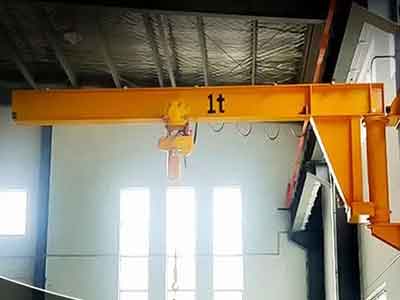
Application: Wall-mounted jib cranes are affixed to a building's structure or an existing support column, providing a 180-degree or full 360-degree rotation. They are ideal for confined work areas where floor space is limited.
Advantages: These cranes optimize floor space utilization by mounting to existing structures. They offer precise movement capabilities, allowing operators to navigate materials precisely within confined workspaces.
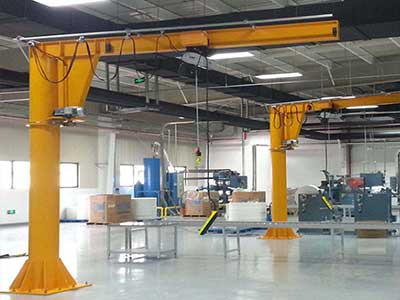
Application: Free-standing jib cranes are standalone units secured to a floor-mounted base, offering greater coverage area and flexibility in positioning.
Advantages: They provide a wider range of coverage and flexibility in handling materials across larger workspaces. Free-standing jib cranes are versatile and can be moved to different locations within a facility.
Coverage Area and Rotation: Meeting Specific Workstation Needs
- Coverage Area: Jib cranes come in various configurations with different coverage areas, allowing customization to suit specific workstation layouts. The coverage area dictates the reach and accessibility of the crane, ensuring it effectively covers the required workspace.
- Rotation: The rotation capabilities of jib cranes range from manual rotation to motorized options. This feature enables the crane to cover specific work areas efficiently, allowing operators to position loads precisely.
Load Capacity and Structural Considerations: Ensuring Safety
Load Capacity:
Jib cranes are available in a range of load capacities suitable for handling different weights of materials and equipment. These capacities vary, enabling operators to lift smaller loads for maintenance tasks or heavier loads during equipment handling.
Structural Considerations:
Structural integrity is paramount in ensuring the safety and reliability of jib cranes. Reinforced arms, robust bearings, and stable pivot points are crucial structural considerations. They ensure that the crane can safely support the intended loads without compromising safety standards.
Jib cranes, with their diverse configurations and structural features, offer precise material handling capabilities and efficient equipment maintenance within cement manufacturing and related sectors, ensuring safety, productivity, and optimal utilization of workspace.
Your Trusted Overhead Crane Manufacturer & Supplier
Grab Bucket Cranes for Cement Factory
Grab bucket cranes play a pivotal role in efficient raw material transport and discharge processes within cement manufacturing and related sectors.
Bucket Types and Materials: Catering to Various Raw Materials
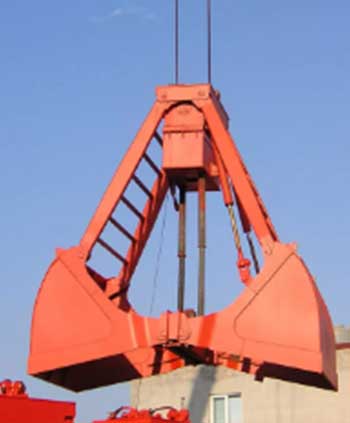
Ideal Materials: Clamshell buckets are well-suited for handling granular materials prevalent in cement manufacturing, such as aggregates, limestone, and sand. These buckets feature two hinged plates or "shells" that open and close, enabling them to scoop and securely hold loose particles during lifting and transport operations.
Functionality: The clamshell design allows precise grabbing of loose materials, providing efficient handling capabilities, especially in applications where controlled, accurate placement of materials is required.
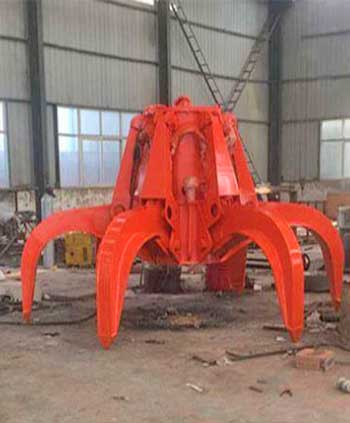
Ideal Materials: Orange peel buckets excel in handling bulkier materials encountered in cement manufacturing, including clinker or scrap materials. These buckets feature multiple grab points that open and close in a peeling motion, securely holding and transporting dense or irregularly shaped loads.
Functionality: The multiple grab points provide a firm grip on materials, allowing the crane to efficiently lift and move heavy or irregularly shaped loads without compromising stability or safety.
Materials Used:
- High-Strength Steel or Alloys: Grab bucket construction often involves the use of high-strength steel or specialized alloys. These materials are selected for their durability, resilience to abrasion, corrosion resistance, and ability to withstand heavy impacts encountered during material handling operations.
- Durability: High-strength materials ensure that the grab bucket can endure the rigorous demands of lifting, transporting, and discharging raw materials without succumbing to wear and tear.
- Abrasion and Corrosion Resistance: The chosen materials are specifically engineered to resist abrasion caused by the movement of materials within the bucket and to withstand corrosion due to exposure to moisture, chemicals, or harsh environmental conditions commonly encountered in cement manufacturing environments.
- Longevity: The resistance to abrasion and corrosion ensures an extended lifespan for the grab bucket, reducing maintenance needs and contributing to overall operational efficiency.
The selection of appropriate bucket types and materials in grab bucket cranes is crucial in ensuring efficient and reliable handling of various raw materials encountered in cement manufacturing, contributing significantly to operational productivity and equipment durability.
User-Friendly Controls: Ease of Operation and Maintenance
- Control Systems: Modern grab bucket cranes are equipped with user-friendly control interfaces, allowing operators to efficiently manage grab motions, lifting speeds, and material discharge. Intuitive controls enhance ease of operation and ensure precise material handling.
- Maintenance Accessibility: Regular maintenance features easy access points for inspection, lubrication, and component replacement. Simplified maintenance procedures contribute to smoother operations, reduced downtime, and prolonged equipment lifespan.
Grab bucket cranes, with their tailored bucket designs, efficiency optimizations, and user-friendly controls, serve as indispensable assets in facilitating the swift and precise handling of diverse raw materials essential in cement manufacturing and related sectors.
Your Trusted Overhead Crane Manufacturer & Supplier
Industrial Sectors Related to Cement Manufacturing and Crane Use
Construction Industry: Crane Selection Criteria for Construction Projects
Crane Selection Criteria: The construction industry relies on cranes for diverse tasks, including lifting heavy materials, erecting structures, and facilitating construction activities. Crane selection criteria encompass factors like lifting capacity, boom length, maneuverability, and safety features, tailored to project-specific requirements.
Concrete Producers: Compatibility with Concrete Production Equipment
Equipment Compatibility: Cranes used in concrete production sites require compatibility with batching plants, mixers, and distribution systems. Integration with these equipment types ensures efficient material handling, timely concrete delivery, and adherence to production schedules.
Raw Material Suppliers: Crane Specifications for Material Loading/Unloading
Material Handling Specifications: Raw material suppliers necessitate cranes tailored for material loading and unloading processes. These cranes should accommodate various materials, have adaptable lifting capacities, and ensure efficient handling to streamline supply chain operations.
Infrastructure Development: Crane Requirements for Large-Scale Projects
Large-Scale Projects: Infrastructure development projects demand heavy-duty cranes capable of lifting massive loads for constructing bridges, highways, and skyscrapers. These projects require cranes with high lifting capacities, extended reach, and precise control.
Building Materials Suppliers: Crane Solutions for Various Materials
Materials Handling Solutions: Building materials suppliers require cranes capable of handling diverse materials such as bricks, steel, glass, and prefabricated components. Crane solutions should offer versatility and adaptability to handle different materials efficiently.
Government and Regulatory Bodies: Compliance Standards and Certifications
Compliance and Certifications: Cranes used in industrial sectors are subject to stringent safety and operational standards mandated by regulatory bodies. Compliance with safety regulations and obtaining necessary certifications is imperative for crane use in these sectors.
Transportation and Logistics: Considerations for Efficient Material Transport
Efficient Material Transport: Transportation and logistics sectors rely on cranes for efficient loading and unloading of materials onto trucks, ships, or railcars. Cranes should optimize material handling processes, ensuring swift and safe transport operations.
Research and Development: Innovations and Testing Needs in Crane Technology
Innovations and Testing: Research and development sectors seek cranes for innovation testing, prototype handling, and specialized material manipulation. These cranes should provide precision, control, and adaptability for research purposes.
Environmental and Sustainability Services: Eco-Friendly Crane Solutions
Eco-Friendly Solutions: Sectors focused on environmental sustainability require cranes with eco-friendly features. This includes energy-efficient operations, reduced emissions, and innovative technologies supporting sustainable practices.
Future Trends and Innovations in Crane Technology for Cement Manufacturing
IoT and Automation: Enhancing Operational Efficiency
- IoT Integration: The integration of IoT (Internet of Things) technology in crane systems enables data collection, analysis, and real-time monitoring of crane performance, allowing predictive maintenance and optimizing operational efficiency.
- Automation Advancements: Automation in crane operations involves automated load handling, positioning, and transport, reducing human intervention, improving precision, and enhancing overall productivity.
Remote Monitoring and Control Systems: Real-Time Management Advancements
- Real-Time Monitoring: Remote monitoring systems equipped with sensors and cameras provide real-time insights into crane operations, allowing remote diagnostics, fault identification, and performance optimization, thereby minimizing downtime.
- Control System Advancements: Advancements in control systems enable remote operation and adjustment of crane functionalities, allowing operators to manage operations from a centralized location, enhancing safety and operational control.
Sustainability and Green Crane Solutions: Meeting Environmental Goals
- Energy-Efficient Operations: Crane technology is evolving to incorporate energy-efficient components and power-saving mechanisms, reducing energy consumption and lowering environmental impact.
- Eco-Friendly Materials and Practices: Manufacturers are exploring the use of eco-friendly materials and construction methods in crane manufacturing to minimize the environmental footprint of crane operations within cement manufacturing plants.
Industry Integration: Adapting to Digital Transformations
- Digital Transformation: Industry 0 integration involves the convergence of digital technologies like AI (Artificial Intelligence), machine learning, and big data analytics in crane systems, enabling smarter decision-making, predictive maintenance, and autonomous operations.
- Smart Crane Solutions: Industry 0 integration aims to develop smart crane solutions capable of self-diagnosis, self-optimization, and adapting to dynamic operational environments, ensuring efficiency and adaptability.
Adopting these future-oriented trends and innovations in crane technology within the context of cement manufacturing promises enhanced operational efficiency, improved safety, reduced downtime, and a more sustainable approach to material handling and production processes.
Get Your Custom Overhead Crane for Cement Factory
Crane technology encompasses a diverse range of types, including overhead cranes, gantry cranes, jib cranes, and grab bucket cranes, each tailored for specific applications in cement manufacturing and related sectors.
These cranes play pivotal roles in material handling, maintenance, and equipment handling, catering to various operational needs and enhancing efficiency within cement plants.
Buyer Considerations: For buyers and users, selecting the right crane involves careful consideration of factors such as load-bearing capabilities, durability, adaptability to changing operational needs, compliance with safety standards, and future scalability.
Ongoing Advancements: The future of crane technology in cement manufacturing embraces continual advancements, including IoT integration, automation, remote monitoring, sustainability initiatives, and Industry 0 integration.
The dynamic landscape of crane technology within the realm of cement manufacturing continues to evolve, offering diverse solutions tailored to specific operational needs. The comprehensive understanding of crane types, meticulous considerations in selection, and anticipation of future advancements pave the way for enhanced productivity, safety, and sustainability in cement manufacturing operations.
